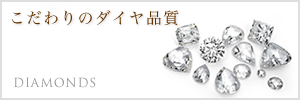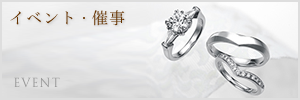Diamond Engagement Rings 101: “How To Buy Diamonds in Tokyo, Japan”.
How To Buy Diamonds in Tokyo, Japan.
So you have studied the diamond grading charts and you know what each of the 4C’s means. That is great. But can you answer these two simple questions?
1. What is your budget?
2. What type of diamond do you want?
For most men, they are lost. And we haven’t even gotten to the ring design yet!
Try to narrow things down as much as possible. Here is a helpful checklist for you to go through:
1. So, what is your budget? The typical reply is, “I have no idea what a diamond costs”. Try to come up with a range that you feel comfortable with. Not a price range that the salesman will feel comfortable receiving.
A few points to consider:
A. You will never have a second chance to get this right. For many parents, this will be a very tough and emotional time. The type of ring you give will be your way of reassuring them that you will take care of their daughter. So don’t be cheap, or else you will pay for it in the end.
B. On the other side, if you have a woman who is dictating the type of diamond that she “needs”, then maybe you have just found out that she is not truly the one. Here the savings will be enormous.
2. What diamond shape do you want?
- Round Brilliant Cut, Princess, Radiant, Emerald, Asscher, Cushion, Oval, Pear, Marquise, Heart, etc…
- Round diamonds give the best luster and shine.
- You will have more of a selection with round diamonds, in both stones and ring settings.
- Fancy Shapes such as Princess Cuts, Oval Cuts, Asscher Cuts, etc… should be cheaper, compared to round diamonds due to less rough diamond weight loss.
- Some fancy shapes such as Princess Cuts typically have a smaller diameter size when compared to round stones. For example, a 1carat round will be approximately 6.5mm where as a 1 carat Princess Cut will measure about 5.5mm. (See Diamond Size Charts).
- Some fancy shapes such as Oval Cuts, Marquise Cuts, and Pears will be cut shallow or deep. Meaning that they will either have a very big face and diameter, or look very small depending on how they are cut.
- Since fancy shapes come in a variety of shapes and measurements, your choice of ring designs becomes limited. In many cases, you may have to create a hand made ring for your diamond, which will increase the overall cost.
3. List the order of importance for the 4C’s.
- Diamond Carat Weight
- Diamond Color
- Diamond Clarity
- Diamond Cut
Typically the above order will vary depending on what country you come from, your cultural background, your financial situation, etc…
4. Diamond Carat Weight
Does size really matter? Well, to many women it really does.
- The typical size for a Japanese Diamond Engagement Ring is 0.25 carats or 0.30 carats.
- The carat size of choice for most international couples is 1 carat and above.
- When trying to decide between a 1 carat stone and a smaller stone of 0.70 carats or 0.80 carats, go for the 1 carat size. I see many clients who later regret they didn’t choose the 1 carat.
- If you still believe that the 1 carat is too big or if it is over budget, then go for a heavy 60 points stone (ie. 0.68 carats) in a higher diamond grade or a fancy shape like a Princess Cut.
- Diamonds have magic carat weights (or brackets) where the pricing goes up drastically. These size brackets are: 0.20, 0.25, 0.30, 0.40, 0.50, 0.70, 1.00, 1.50, 2.00, 3.00 etc…
- You may pay a slight premium for the off size weights, such as a 0.68 ct or a 1.48 ct , but it is well worth it. The only problem is that these pieces are extremely rare. If you find one, be ready to jump on it right away.
5. Diamond Color
D color – “The best of the best”. Having a “D” color stone is like being in a special members club. They are rare, and women love saying their diamond is a “D”.
E color – E color is for the person looking for an amazing piece, but also wants value. You will not have to pay the premium for the D, and once set, you probably cannot tell the difference between a D and an E (except for the drop in price).
(Approximately 10 to 15% cheaper when compared to a D Color in 1 carat bridal type stones).
F and G color – These stones are still white and colorless. The price differential between these colors and a D color is huge. Basically, they give you a similar look for a much cheaper price.
(Approximately 20 to 40% cheaper when compared to a D Color in 1 carat bridal type stones).
H and I color – Many top international jewelry brands still use these colors.
They have a warmer feel, and a much lower price tag. The only problem is that typical Japanese jewelers will go only with G color and up. That means the selection is minimal if you are looking for this range in Japan.
(Approximately 50 to 75% cheaper when compared to a D Color in 1 carat bridal type stones).
J color and down – These colors are warmer. They are very popular in Asian countries or for people who are using yellow gold since the gold metal color reflects into the stone.
Color diamonds – If you are looking for something different, why not try color diamonds? The only problem is the huge price range that we see in these stones. For example, a 1 carat red diamond or blue diamond could run a few million dollars where as a 1 carat black diamond could run a few hundred dollars. To show off more color, many color diamonds are cut into fancy shapes such as princess cuts, radiant cuts, ovals etc.
Diamond color grade key points:
Try not to set your mind for a specific color or else you will limit your choices. Remember that diamonds are grown naturally. So if you stick with an e color, but an amazing f color comes out, you may have just lost the chance to buy a truly amazing piece.
6. Diamond Clarity
Flawless and Internally Flawless stones are for the collector. In many cases a flawless stone will drop in grade during the setting process due to a potential scratch.
VVS Class diamonds need a microscope to see the inclusions and/or blemishes.
VS class diamonds. Here the range really grows. Take a jewelers loupe (10X) and view the stone. Depending on the size of the diamond, you will either have a very difficult time seeing the inclusions and blemishes, or it will be very easy.
You can really get value here, but you can also get ripped off easily. This is why having someone you can trust and someone who can show you the individual inclusions really counts. Some VS-2 stones are very weakly graded (even with major grading laboratory certificates), so if you want to play it safe but are still on budget, go with a VS-1.
SI class diamonds. Just like the VS stones, there is a huge range in the grades. Every once in a great while, you will find a truly beautiful SI-1 stone that actually looks better than a VS-2. I would rather pay a little more for a beautiful SI-1 than to get a cheap VS-2. A nice SI-1 is perfectly fine for an engagement ring, whereas an SI-2 is stretching it a bit.
I-class diamonds. I class diamonds are fine when it comes to fashion jewelry, but should be avoided when it comes to engagement rings.
7. Diamond Cut – Here is where man has the chance to showcase his artistic skills. Just like with the clarity grade, the lower grades will have more of a range. Starting from the lowest grades, the cut grades are as follows:
- Poor
- Fair
- Good
- Very Good
- Excellent
- Excellent with Hearts and Arrows
- Triple Excellent with Hearts and Arrows
Poor and Fair cut: These grades should not be used for engagement rings
Good Cut: Here we have quite a big range. If an experienced gemologist, whom you trust, is able to pick out a stone that is on the upper end of the good cut range, then this grade is fine. That gemologist should be able to explain and show the differences between the good cut and excellent cut.
Very Good Cut: As with good cut stones, there is a range here. And typically the closer to excellent we get, the greater the chances that the stone will be re-cut to a higher grade. This is also quite common with over size stones in the good cut range. For example, they will take a 1.15 carat good cut and re-cut the stone into a lower weight excellent cut
Excellent cut: Parameters are greatly reduced when you get to excellent cut. The luster, shine, and sparkle is amazing. On top of that, well cut stones that shine, actually appear whiter as well.
Interesting key point: Did you ever notice that when you go to major international jewelry brands that they will rarely discuss the diamonds cut grade? Why is that? It is the 4Cs right? The reason is because most staff cannot explain it and also because for some of them they start their cut grades at good or very good.
Hearts and Arrows or Heart and Cupid:
The cut of a diamond connoisseur. Many people think this cut is a gimmick due to the romantic words but it really takes an extraordinary level of craftsmanship to polish these stones. Also there is the added weight loss to the rough diamond compared to a normal excellent cut.
Key Points: Strict grading standards when it comes to Hearts and Arrows is a must. Please see the English and Technical Translation work we did for Japan’s largest grading laboratory (CGL), and why you need to do a little homework here.
Hearts and Arrows | Heart and Cupid | Same same, but different.
Triple Excellent Hearts and Arrows:
Very similar to the above Excellent Hearts and Arrows, except they take things one step further to create the perfect cut. The diamond cut, polish, and symmetry are all graded excellent. Please remember that when it comes to cut grade the stones can be measured. But when you deal with Hearts and Arrows, Polish, and Symmetry, you have human eyes checking the piece. Therefore there is room for error.
For more information or if you would like to set up a diamond consultation, please contact us at: info@diamonds.co.jp
Specializing in 1 carat diamond engagement rings as well as diamond earrings, diamond necklaces, etc…












